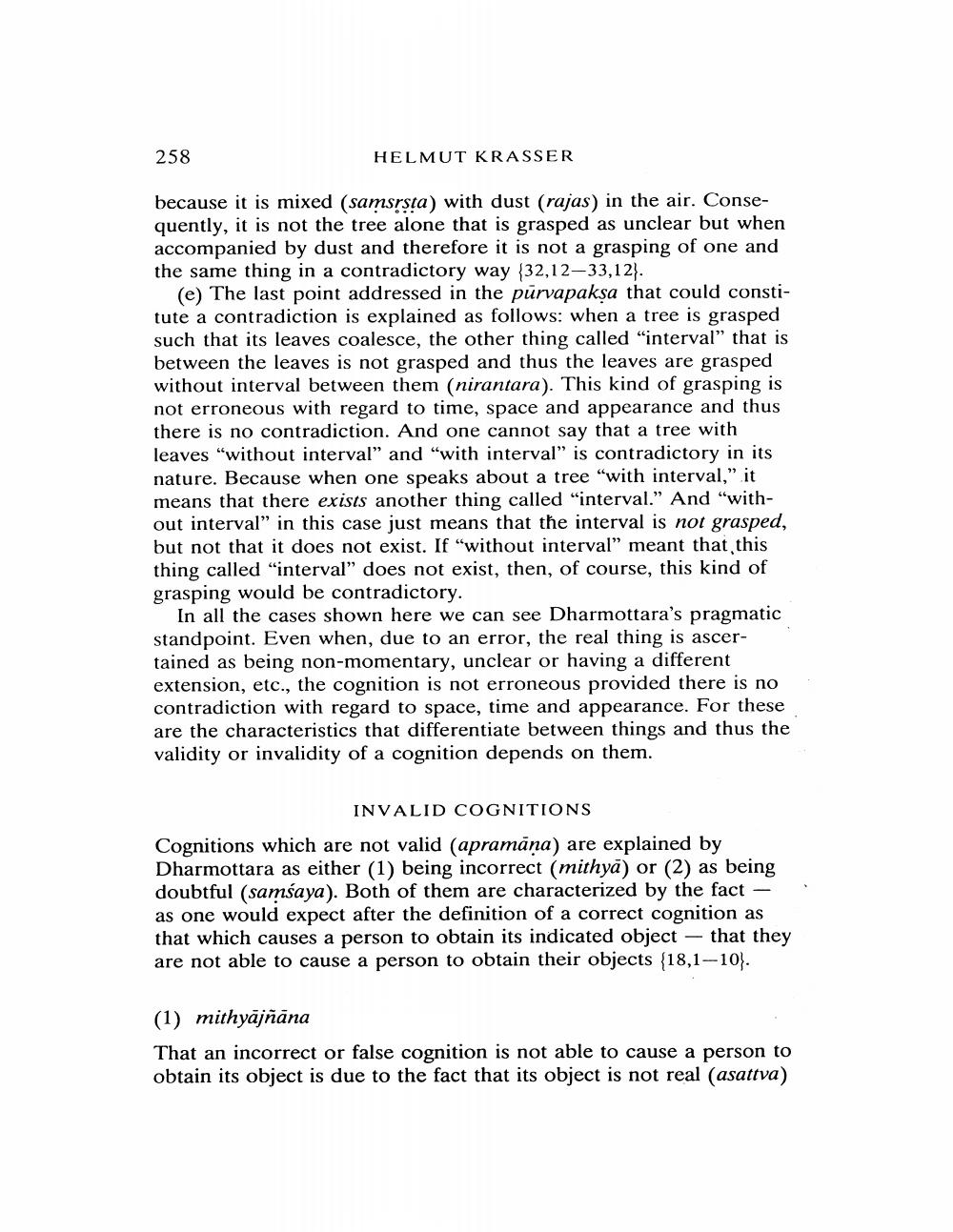________________
258
HELMUT KRASSER
because it is mixed (samsṛsta) with dust (rajas) in the air. Consequently, it is not the tree alone that is grasped as unclear but when accompanied by dust and therefore it is not a grasping of one and the same thing in a contradictory way (32.12-33,12).
(e) The last point addressed in the purvapakṣa that could constitute a contradiction is explained as follows: when a tree is grasped such that its leaves coalesce, the other thing called "interval" that is between the leaves is not grasped and thus the leaves are grasped without interval between them (nirantara). This kind of grasping is not erroneous with regard to time, space and appearance and thus there is no contradiction. And one cannot say that a tree with leaves "without interval" and "with interval" is contradictory in its nature. Because when one speaks about a tree "with interval," it means that there exists another thing called "interval." And "without interval" in this case just means that the interval is not grasped, but not that it does not exist. If "without interval" meant that this thing called "interval" does not exist, then, of course, this kind of grasping would be contradictory.
In all the cases shown here we can see Dharmottara's pragmatic standpoint. Even when, due to an error, the real thing is ascertained as being non-momentary, unclear or having a different extension, etc., the cognition is not erroneous provided there is no contradiction with regard to space, time and appearance. For these are the characteristics that differentiate between things and thus the validity or invalidity of a cognition depends on them.
INVALID COGNITIONS
Cognitions which are not valid (apramāna) are explained by Dharmottara as either (1) being incorrect (mithya) or (2) as being doubtful (samsaya). Both of them are characterized by the fact - as one would expect after the definition of a correct cognition as that which causes a person to obtain its indicated object - that they are not able to cause a person to obtain their objects (18,1-10).
(1) mithyajñāna
That an incorrect or false cognition is not able to cause a person to obtain its object is due to the fact that its object is not real (asattva)




